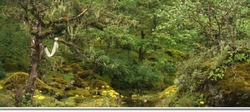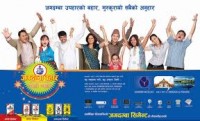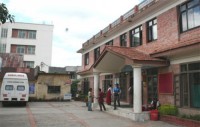Parsa district
Situated at the distance of eighty kilometers west of Janakpur, Parsa district is linked up with the Tribhuvan Rajpath through the Mahendra highway. In the city of Birgunj in Parsa district, many western hippies and mystics lined up for clearance into Nepal on the Indian side at Raxual and spent nights in one of Birgunj’s many cheap lodging houses before heading towards Kathmandu during the 1960s and 1970s. Birgunj still serves as an industrial hub with timber yards, a sugar mill, match factory and a harsh bus station where people throng to catch the overcrowded buses heading towards the capital city of Kathmandu.
The people visiting the Chitwan National Park and Parsa Wildlife Reserve also land here first. Parsa Wildlife Reserve covers an area of 1,200 sq km and is bounded by the Rapti River in the north, Rewa River and the Churia or Siwalik range in the south and the Narayani River in the west. The small forests of valuable indigenous woods like Khani, Sisso and Simal make up most of the vegetation in the reserve with elephants (also the best form of transport), Samta deer, tiger, Asiatic one-horned rhino, chital and leopard being the major species of fauna found here.
The district with Birgunj as it’s headquarter offers a chance to explore the natural biodiversity of the Parsa Wildlife Reserve along with an opportunity to study and observe the language and culture of Bhojpuri, Nepali, Newari, Maithali, Tamang, Tharu, Gurung, Abadhi, Magar, Rai, Rajbanshi, Limbu and Sherpa communities. The major pond in Parsa district is Banjari Taal and the major tourist attractions in the district are Bindhyabasini and Birgunj. The district shares its boundary with Bara in the east, Chitwan in the west, Makawanpur in the north and Bihar (India) in the south. On the way to Kathmandu comes a small yet beautiful hill station called Daman. Parsa is easily accessible by road through various parts of the country.







